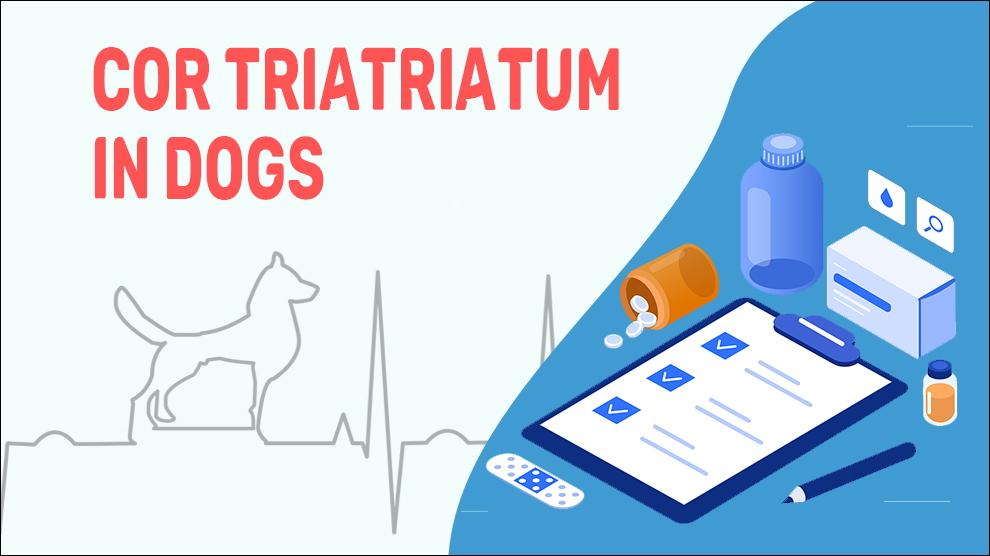Cor triatriatum is a rare, congenital, developmental condition in which a thin, fibro-muscular membrane divides the right (dexter) or left atrium (sinister) and separates the pulmonary veins from the mitral valve into 3 chambers. Simply, cor triatriatum means "heart with three atria"
Similar to Ebstein's anomaly, the membrane may divide the right pulmonary vein from the tricuspid valve (cor triatriatum dextrum) in the right atrium and this is more common than cor triatriatum sinister (left atrium).
Cor triatriatum sinister (CTS) represents only 0.1% of all congenital abnormalities. This is usually accompanied by other congenital heart defects such as ventricular septal defect, atrial septal defect, mitral regurgitation, pulmonic stenosis, and tetralogy of Fallot.
This cardiac anomaly creates a backup of pressure resulting in Palpitations, a low cardiac output, fluid buildup in the abdomen, fainting, and ultimately heart failure leading to death.
Symptoms Of Cor Triatriatum
- Dyspnea and orthopnea
- Abnormal pulses
- Loud heart murmur
- Swollen abdomen
- Stunted in growth
- Fatigue / Cough
- Respiratory distress
- Decreased appetite
- Right-sided congestive heart failure
Treatment Options For Cor Triatriatum
The typical approach for this condition is no treatment is needed until symptoms are noted.
Treatment for CTS varies according to the presence of other heart abnormalities and the extent of the defects.
For young, otherwise healthy dogs with a life-threatening defect, surgery may be effective but this will depend on the recommendation of a veterinarian.
Medical management for Dogs with mild symptoms may be necessary to support heart function and reduce congestive heart failure.
Drug therapy: When surgery is not an option or if heart failure has occurred, drug therapy with Indomethacin, enalapril or benazepril, digoxin, and furosemide is often prescribed.
Surgical techniques:
The definitive treatment is the removal of the membrane causing the cor triatriatum and Balloon catheterization. Atrial appendage/accessory membrane complete surgical resection is performed through cardiopulmonary bypass( midline sternotomy) and atrial septum closure is done with a pericardial patch.
Home Remedies For Cor Triatriatum
The best home remedies (such as diets) for your dog undergoing treatment for heart disease - depending on your dog.
Occasionally long-term follow-up appointments may be required if your animal is taking any cardiac medication or if there is any possibility of long-standing effects (permanent damage) to the heart.
Prevention Of Cor Triatriatum
Prevention of CTS is a hereditary concern. Dogs with CTS including First degree relatives (littermates and parents) should not be bred so as to avoid passing the condition on to the next generation.
Screening of highly affected breeds prior to breeding is strongly recommended.
Affected Breeds Of Cor Triatriatum
French Bulldog, English Bulldog, Large Dog Breeds, Boxer, Rottweiler, Greyhound, Golden Retriever, German Shepherd, German Shorthaired Pointer, Cocker Spaniel, Chow Chow
Additional Facts For Cor Triatriatum
- Causes:
- Mostly congenital
- Types:
- Cor triatriatum Sinister: This is a rare defect of the heart in the left atrium with a slight male predominance. The dogs have signs of pulmonary hypertension, frequent respiratory infections, and breathlessness. The pathophysiology is similar to that of mitral stenosis and to differentiate the two conditions, echocardiography is used.
- Cor triatriatum dexter is more common than CTS and it involves the right atrium.
- Mortality:
The untreated CTS show clinical signs usually within a year. Dogs with CTS have a more than a 50% mortality rate by one year of age if left untreated.
After right heart failure has developed due to CTS, Life expectancy is variable and it is typically around 5-10 months.
- Diagnosis:
- Routine hematology, urinalysis
- Serum chemistry profile
- Electrocardiogram
- Cardiac ultrasound
- Echocardiography
- Prognosis:
When detected early and given appropriate treatment with successful closure of the CTS, most dogs live a normal life. Unless there are complications from already developed heart failure or other heart defects, there is rarely any need for medications in the future.
When To See A Vet
Time to visit the vet clinic for an examination, if you notice any of the following:
- Difficulty breathing
- Abnormal pulses
- Loud heart murmur
Food Suggestions For Cor Triatriatum
- In diets elevated in protein (>100 grams per 1000 calories) at least 30% meat-based protein (on a dry matter basis) is recommended.
- CTS dogs’ ability to excrete sodium in their urine is markedly reduced. Sodium or salt should be limited to help reduce fluid accumulation.
- Foods that tend to be high in salt should be cut off. snack foods (crackers, chips, pretzels, etc.), pizza, bread, cheese, other dairy products, etc.
- Omega-3 fatty acids (fish oils) and amino acid foods/supplements.
- Vitamin E and co-enzyme Q10.
- Carnitine, B vitamins, and Magnesium.
- Maintain ideal body weight and Fresh food can be a very healthy option.
Conclusion
The prognosis for dogs with Cor triatriatum is much better than with other heart defects. Many CTS dogs can live normal lives if they are without any other complications. Dogs with mild symptoms can be managed with medications.

















